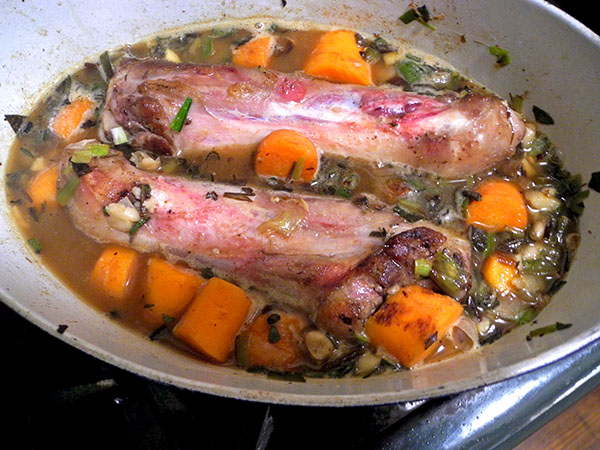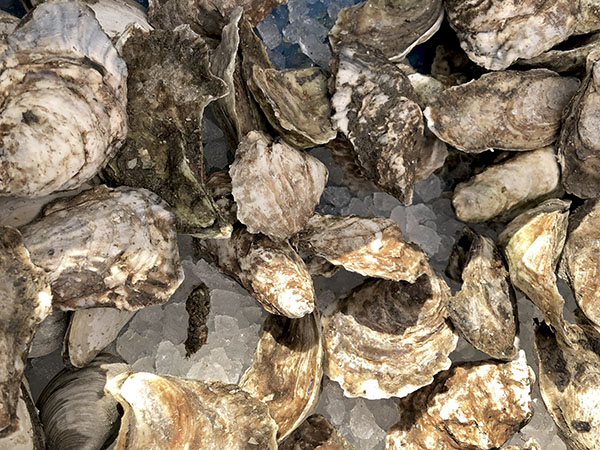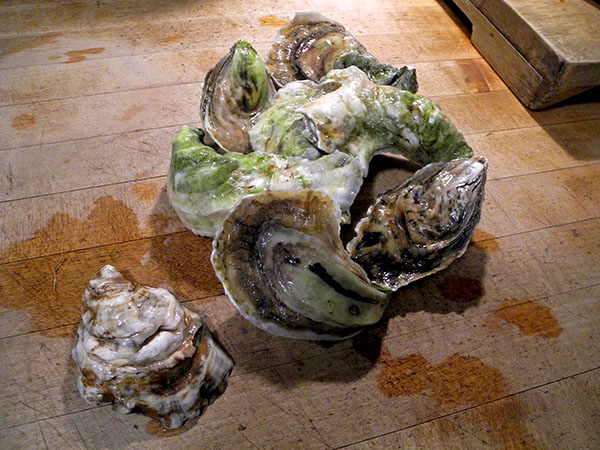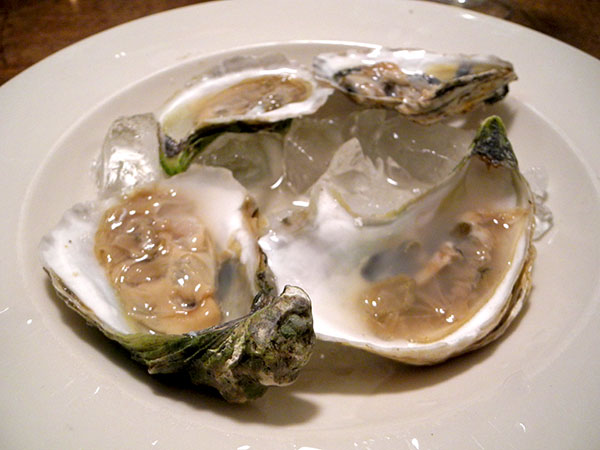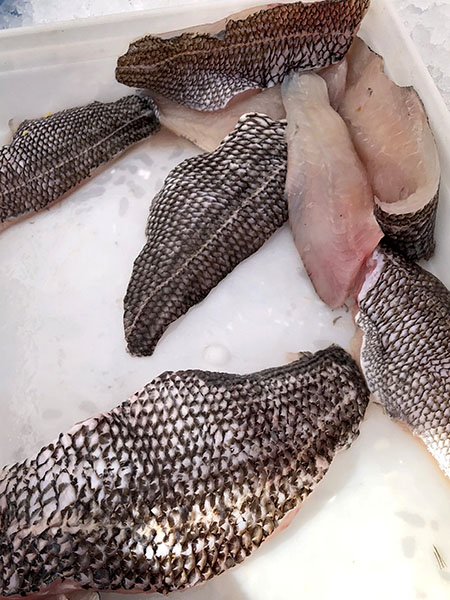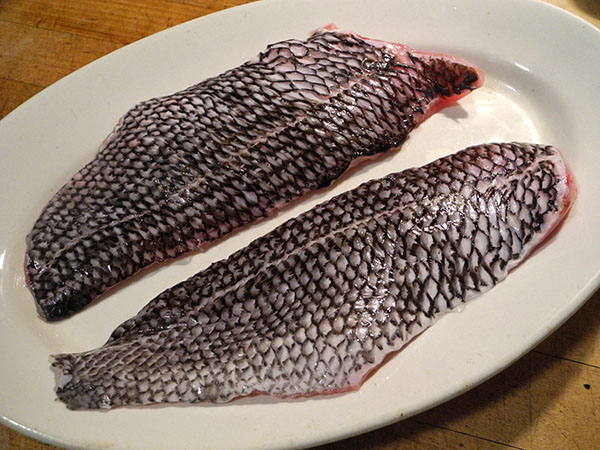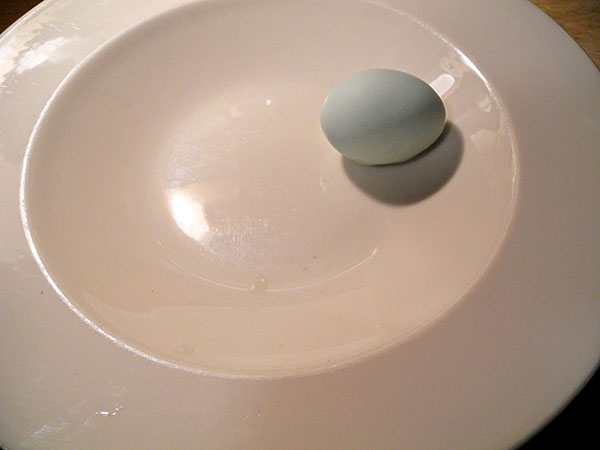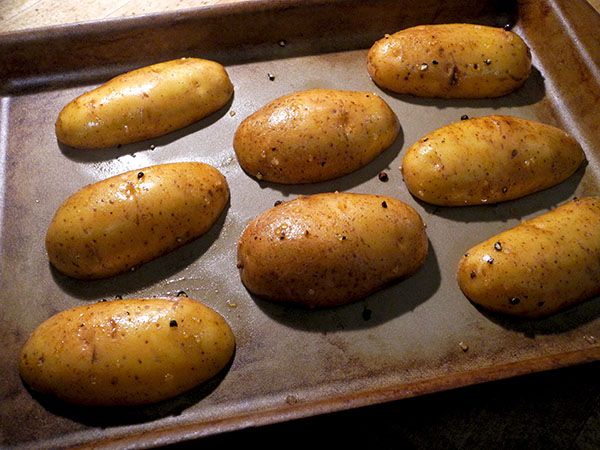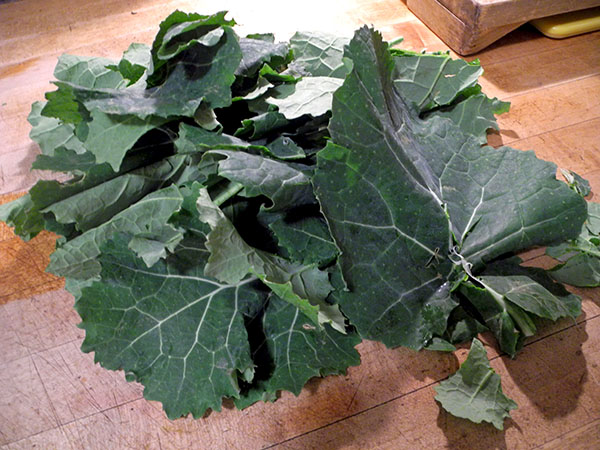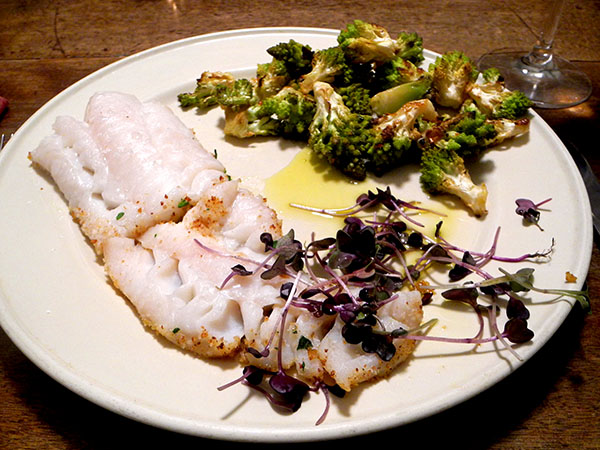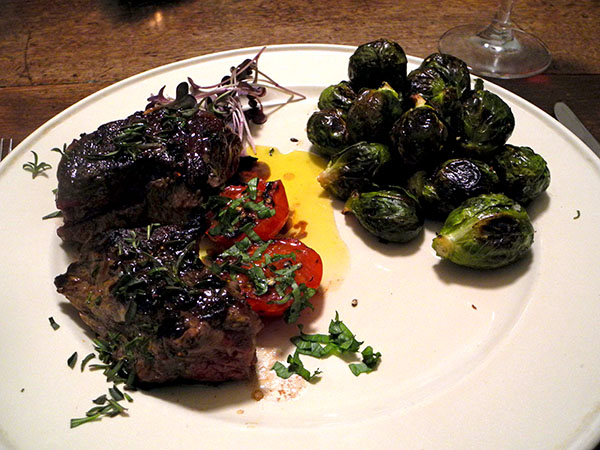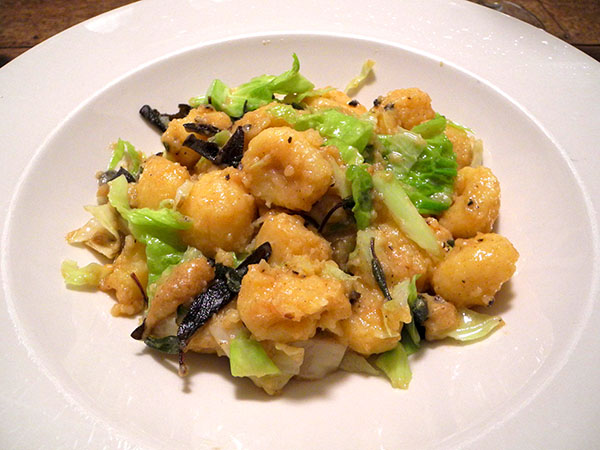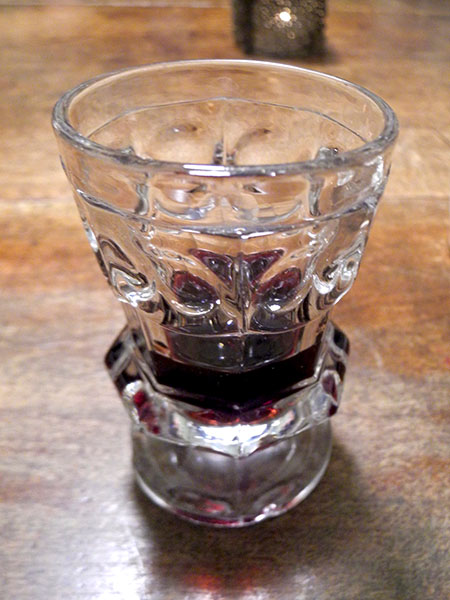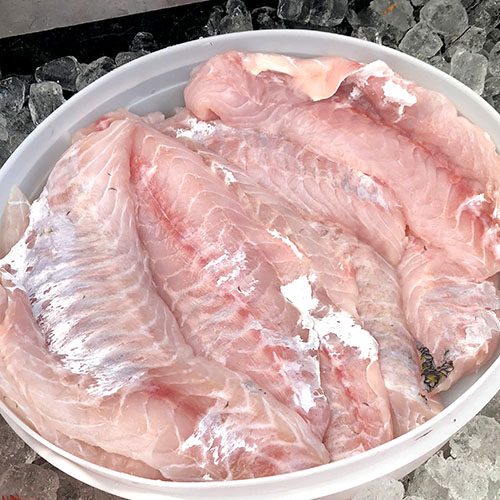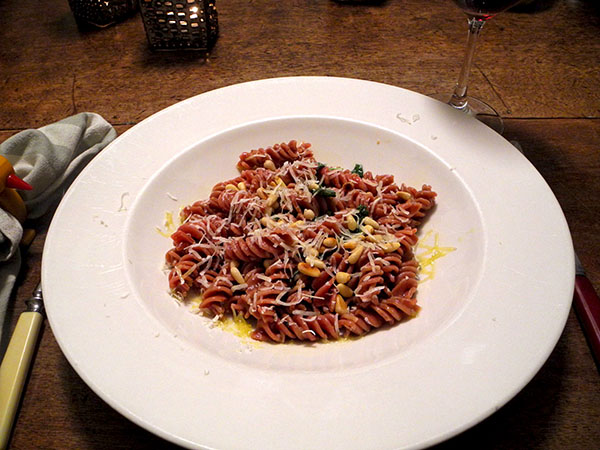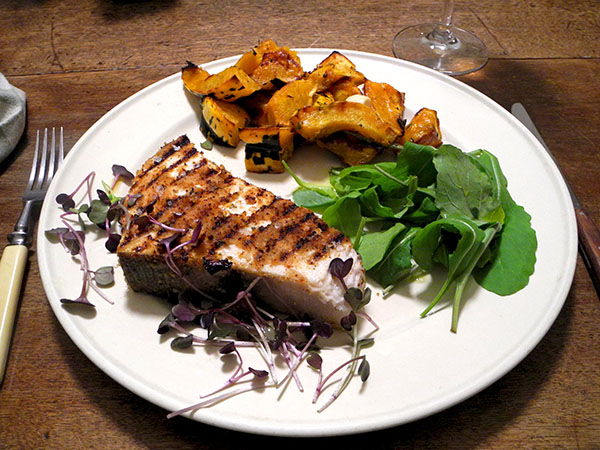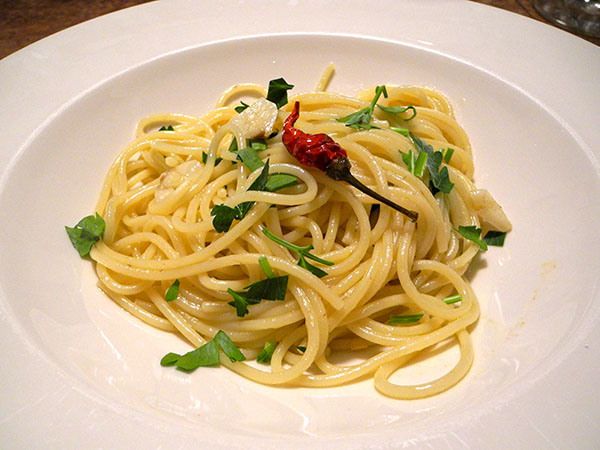
I always find it a treat to return to a squid dinner, both for the fun of the preparation and the enjoyment of the meal. This time we were also able to enjoy one of the most luscious greens ever, and here I have to pinch myself, because it really is the middle of winter.
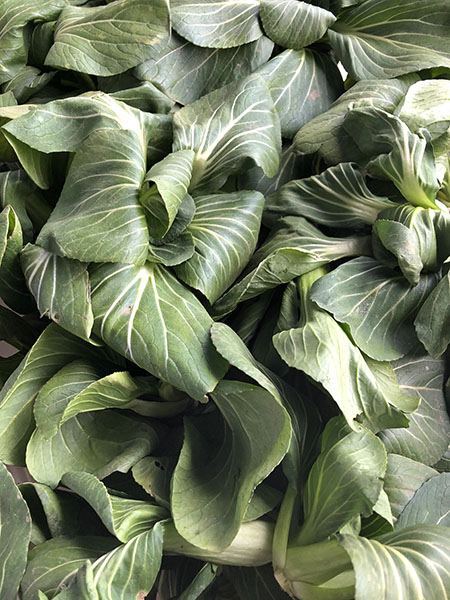
- a large rectangular enameled cast iron pan heated on top of the stove until hot, its cooking surface brushed with olive oil, and once the oil was also quite hot, one pound of rinsed and carefully dried one pound of cleaned squid, including many tentacles, from Pure Vida Seafood, quickly arranged inside and immediately sprinkled with a heaping teaspoon of super-pungent dried Sicilian oregano from Buon Italia, most of one crushed dried Sicilian pepperoncino, also from Buon Italia, and one piece of dried orang/gold habanada pepper, crushed, sea salt and freshly-ground black pepper, followed by a drizzle of 3 tablespoons of organic juice from a Whole Foods lemon, and some olive oil, the pan placed inside a pre-heated 400º oven and roasted for only 5 minutes or a bit more, removed, the squid distributed onto 2 plates, ladled with a bit of their cooking juices, which had been transferred into a sauce pitcher
- pak choy (also called bok choy) from Norwich Meadows Farm, washed, sliced lengthwise, wilted in olive oil along with 2 Rocambole garlic cloves from Keith’s Farm which had already been browned very lightly in the oil, the greens seasoned with sea salt and freshly-ground black pepper and drizzled with a little more olive oil
- the wine was an Italian (Campania) white, Feudi di San Gregorio Greco di Tufo 2015, from Garnet Wines & Liquors
- the music was Mozart’s ‘Die Entführung aus dem Serail’, with John Eliot Gardiner conducting the English Baroque Soloists and the Monteverdi Choir

